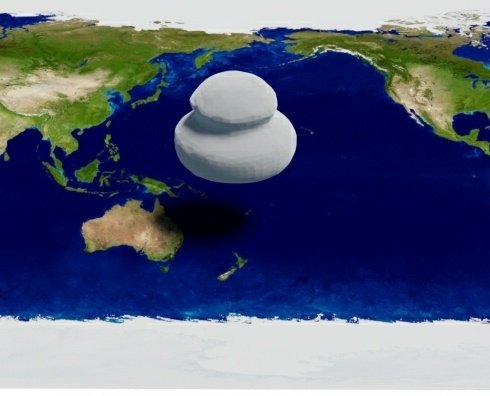When the Hunga Tonga-Hunga Ha’apai (HTHH) volcano erupted it shot 40 trillion gallons of seawater into the atmosphere at a speed approaching escape velocity at well over 20,000mph.
Tonga Eruption Blasted Unprecedented Amount of Water Into Stratosphere. The huge amount of water vapor hurled into the atmosphere, as detected by NASA’s Microwave Limb Sounder, could end up temporarily warming Earth’s surface.
— Erik Magnethi (@ErikMagnethi) August 4, 2023
When the Hunga Tonga-Hunga Ha’apai volcano erupted on… pic.twitter.com/psaxTzFj8k
The HTHH volcano is a submarine volcano located about 30 kilometers south-southeast of the island of Fonuafo’ou, in the island nation of Tonga in the South Pacific Ocean. This volcano lies along the Tofua volcanic arc, a curving line of active and extinct volcanoes in the region. It has its own X page and is described as: Mischievously explosive submarine volcano in Tonga. Currently holds title for most explosive eruption of the 21st century!
Submarine volcanoes are fascinating geological features that occur beneath the surface of the ocean. They are a significant part of Earth’s volcanic activity, with estimates suggesting that around 75% of the Earth’s annual magma output comes from submarine volcanism.
Submarine volcanoes do have unique characteristics compared to their terrestrial counterparts, primarily due to the high-pressure, high-moisture environment in which they erupt.
When a submarine volcano erupts, the intense pressure of the surrounding water can prevent the explosive disintegration of magma that forms volcanic ash. Instead, the erupted materials are often in the form of pillow lava, which forms when the magma cools rapidly upon contact with water, or in the form of volcanic glass particles. However, if a submarine eruption is powerful enough to break the water’s surface, it can produce ash clouds, as has been observed in various instances. Great article here.
CLIMATE CHANGE FROM HONGA TONGA-HUNGA VOLCANO ERUPTION TO PEAK IN 2025-2029:
— Robin Monotti (@robinmonotti) August 8, 2023
"The amount of water vapor [a strong greenhouse gas] injected into the stratosphere after the eruption of Hunga Tonga-Hunga Ha’apai (HTHH) was unprecedented, and it is therefore unclear what it might… pic.twitter.com/R460WFUdIU
In a recent paper, the researchers argue that the HTHH eruption has had profound effects on global climate, including temperatures and precipitation which will continue to have effects for the rest of decade
Long-term surface impact of Hunga Tonga-Hunga Ha’apai-like stratospheric water vapor injection
This new Hunga Tonga 🌋 research study (in peer review) is revelatory. Seriously, we need to consider the volcano as an unexpected, decade-long, natural warming spike.
— Ryan Maue (@RyanMaue) August 8, 2023
The greenhouse warming effect of 40 trillion gallons of water vapor in the stratosphere may have just kicked… https://t.co/4PtlRa0Shl pic.twitter.com/0EbQV7LLNe

